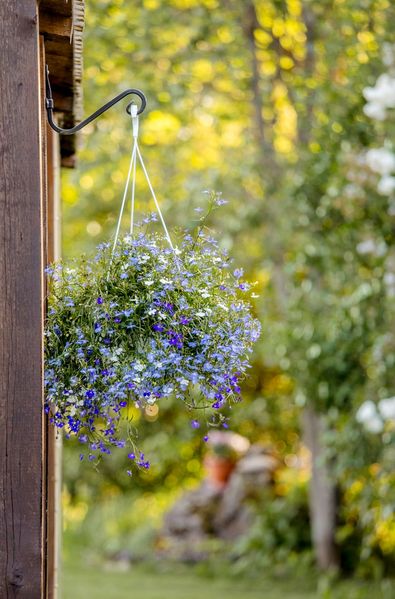Choosing Hanging Plant Hooks
In exploring ways to hang plants, our first priority will be to examine the needs of the plants. Choosing hooks for hanging baskets will have to take into account the amount of both light and moisture where the plants are to be placed. This can be exceptionally tricky when designing indoor green spaces, and may even require the addition of a supplemental grow light. Taking the mature size of the plant into consideration will be imperative. Many potted plants can become extremely heavy. Unfortunately, some decorative plant hooks may not be able to withstand the weight. Plants that are too heavy can damage indoor surfaces, break or bend plant hooks, or possibly harm someone. Always err on the side of caution and choose hooks that can handle more than the plant’s anticipated weight.
Types of Plant Hanger Hooks
Plant hanger hooks come in a wide range of shapes, sizes, and materials. While plastic hooks may work for some smaller plants, like succulents, many growers prefer to use strong steel fixtures. Hooks for hanging baskets can be either wall-mounted, ceiling-mounted, or serve as a stand-alone device. Most reliable wall- and ceiling-mounted plant hooks will require the use of tools for installation. Avoid using adhesive hooks, as these are not strong enough to support most potted plants. Stand-alone hanging hooks are much more common for use outdoors in the garden. One such example is the shepherd’s hook for hanging baskets. Other types of hanging plant hooks for outdoor use commonly include S-hooks and various types of decorative brackets. When installed properly, these plant hanger hooks are able to add interest to the garden by displaying lush potted plants with ease. Ceiling hooks and wall-mounted bracket hooks are popular choices for those wishing to hang potted plants indoors. When hanging plants indoors, it will be especially important to follow installation instructions carefully. This will ensure that the plants are secure, as well as prevent any damage to the home.
